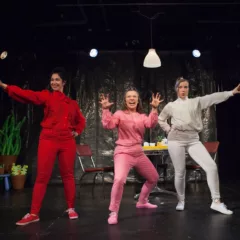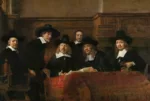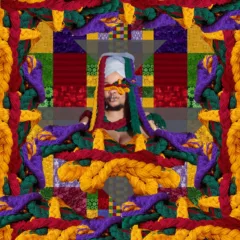Michael Bird, “Artists’ Letters: Leonardo da Vinci to David Hockney”
White Lion Publishing (2019)
Quarto Knows; Barnes and Noble
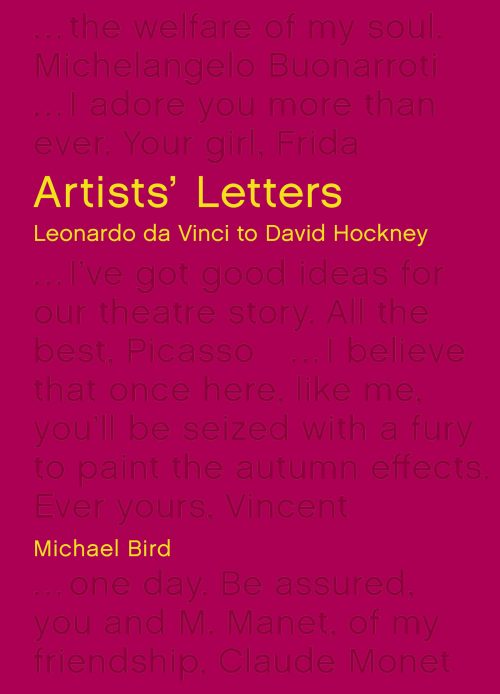
White Lion Publishing
“Traditionally [letters] are sealed or packaged like gifts, so that only the person for whom they are intended is licensed to snap the seal or slip the envelope. But a strange fact about reading all these lines that were not addressed to us is that, to the eye of history, there is no such thing as privacy.” (pp.8)
At the moment, many of us are experiencing a strange warping of connection. Now deep in self-isolation due to the COVID-19 outbreak, people are relying less on in-person connection, and more on communication through phone, video, social media, and – perhaps – letter writing. I myself have noticed a spike in pleasant (read: not-bills) mail lately, and the delight of opening my mailbox to find a hand-written letter is unmatched. Letters are, as Michael Bird explains in his introduction to Artists’ Letters: Leonardo da Vinci to David Hockney, innately personal and material: they are “objects, handled and stared at, folded, unfolded, crumpled up and smoothed flat, slipped into envelopes and jacket pockets, used as bookmarks, ringed with coffee, nibbled by mice, forgotten in shoeboxes” (pp.7). At the present moment – quarantined, unable to go out, without access to our favorite art objects – Bird’s collection of letters is better than a make-do substitute for in-person art experiences. It is a look at artists’ lives, through their own words and those of the individuals to whom they were (and are) closest.
The book is immediately welcoming, with a neon pink cover, yellow lettering, and embossed sample quotes that can be found within the interior. The experience of holding and opening the book is tactile and real – the physical feeling of the embossed words hinting at the emotions that one will feel once inside. The text is broken up into 8 thematic sections: “Family & Friends,” “Artist to Artist,” “Gifts & Greetings,” “Patrons & Supporters,” “Love,” “Professional Matters,” “Travel,” and “Signing Off.” While you may assume that these sections will throw into sharp relief the difference between your regular life and the glamour of the art world, instead the pages reveal an opportunity to see similarities. For example, in chapter one, Michelangelo thanks his nephew for sending a whopping twelve rounds of cheese, and advises him on taking a wife (pp. 22-23). (I, too, snack on cheese and give out uninformed advice.) In “Travel,” we see a honeymoon postcard from Helen Frankenthaler and Robert Motherwell to Maria and Hans Hoffman (pp. 200-201). I’m sure most of us have sent a postcard from a vacation at some point in our lives – or have received one. If anything, this gorgeous text lays out how artists are not so different from ourselves, and provides an opportunity for connection (which is particularly ideal if you are stuck at home).
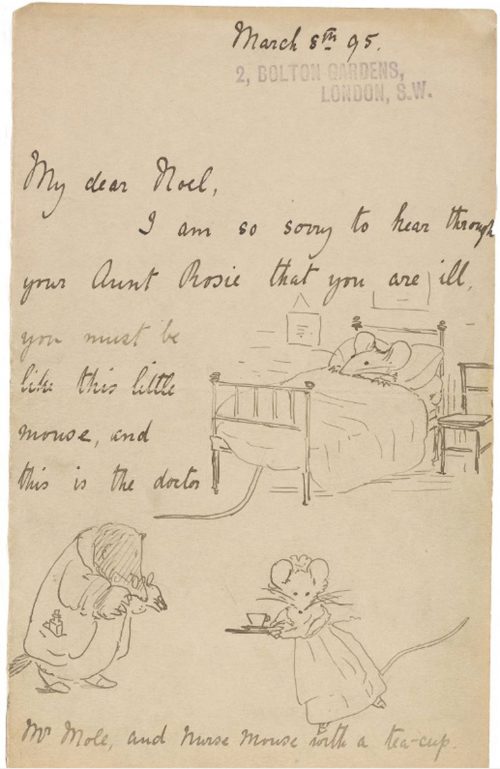
The layout of the book is consistent throughout: each spread tells a story. On the left page, readers are charmed with a scan of the letter (in full color!). This was my favorite part of the book: the ability to see the penmanship; to look at any doodles in the margins, or centerpiece sketches; to observe lettering in English, or – on a few occasions – various other languages; to study the composition and see whose writing (or typing) remained straight and neat, and whose swirled off into an oblivion of lost trains-of-thought. On the right side of the page, readers are provided some information: the top half of the page includes the sender and receiver, date, and some historical context; beneath that is a transcript of the letter (translated to English, if in another language). The clarity of layout made for a fabulous ease of use: ignore the historical context if you desire, read just English translation if you don’t know Italian, try to make out the tiny cramped handwriting or sprawling scrawl in the letter scan. It became a kind of choose-your-own adventure book to me as I dug deeper into the letters.
On a few occasions, you are privy not only to a single letter, but also a response. This is the case with an October 1888 exchange between Gauguin and van Gogh (pp. 50-53). In their letters, within the “Artist to Artist” chapter, the men discuss color, form within portraiture, and the joys of traveling by train. While the formal art discussion may be unfamiliar to some, the basic premise of the letter is relatable to many: how many times have you exchanged texts or emails with someone about a topic on which you are both passionate?
Some letters are much more simple and fun. Take, for example, George Grosz’s letter to Erich S. Herrmann (pp. 94-5). Sent in July of 1945, GG wrote a wonderfully whimsical note to ESH to invite him to attend his birthday party. In the upper part of the note, Grosz has made a little drawing illustrating a long line of glasses full of Hennessy, describing how festive and lively he wants the celebration to be.
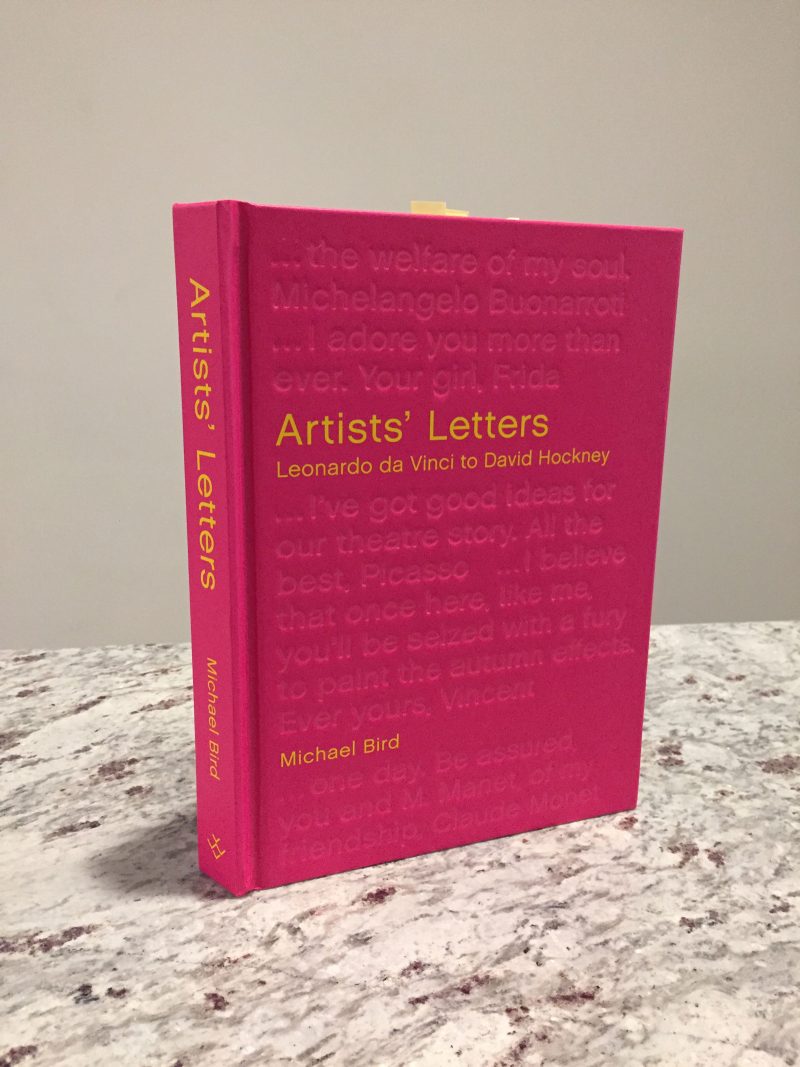
White Lion Publishing
There are many other opportunities to see the fun, emotional, political, and passionate sides of artists. We see Marcel Duchamp’s first known writing of the word “readymade” (pp. 44). In a moment of feminist bad-assery, we see Nancy Spero tell Lucy Lippard: “I have come to the conclusion that the ‘art world’ has to join us, women artists, not we join it” (pp. 104). We see Andy Warhol describe how he is “like everybody else… moving from one roach infested apartment to another” (pp. 188). Perhaps my favorite section is chapter 5, “Love,” in which Rodin becomes increasingly feverish in his confession of love to Camille Claudel (pp. 154-5). In this section, too, is my favorite object. In 1940, Frida Kahlo had been hospitalized for observation just before her second wedding to Rivera (they had divorced the year earlier). She wrote Rivera a note scrawled across the back of her valuables envelope that the hospital had given her to keep her jewelry in. In the note, she confesses to loving him “more than ever” and looking forward to “be[ing] together forever, once and for all… only to love one another” (pp. 136-7). Of course, in true romantic fashion, the envelope features a red kiss in the corner.
It is only fitting that, in a book filled with opportunities to peek at slices of life, the publication should conclude with letters from the end of life. “Signing Off” is the shortest section, with only 2 letters: one from Thomas Gainsborough, and one from Paul Cezanne. Cezanne’s – the final letter in the book – was written to Emilie Bernard on 21 September 1906. He says, “I am always studying after nature and it seems to me that I make slow progress… I am old, ill, and I have sworn to myself to die painting” (pp. 216). On 22 October, he died while painting in his garden at Aix-en-Provence, as he had hoped he would go.
I think that Dorothea Tanning best sums up the value of reading all of these letters. In her writing to Joseph Cornell in the Spring of 1948, she says: “Sometimes I think that the only true and satisfactory means of contact with those we love is by writing rather than talking. So it seems to me that our letters are far more the real barometer of our feelings than when we speak” (pp. 46).



